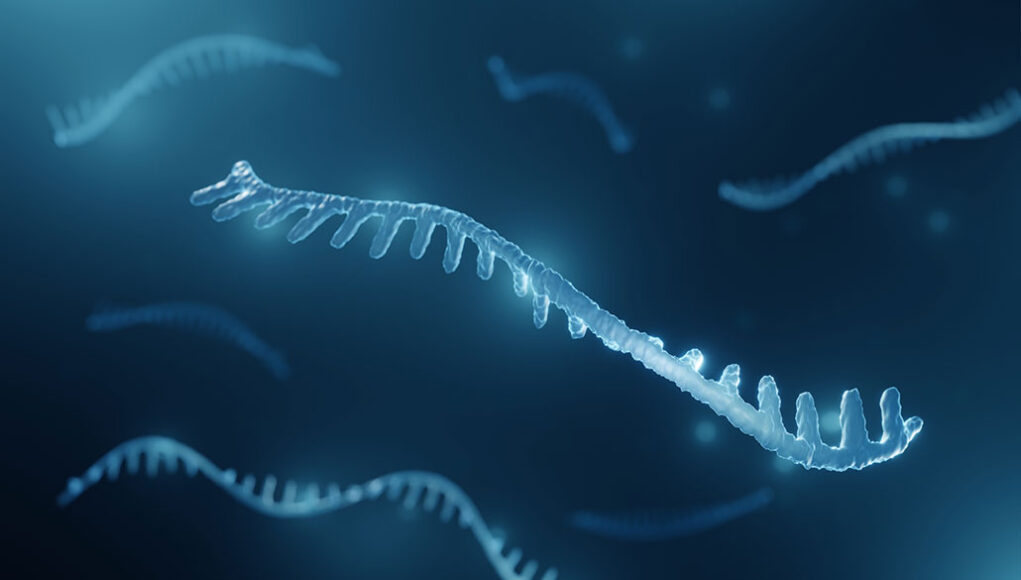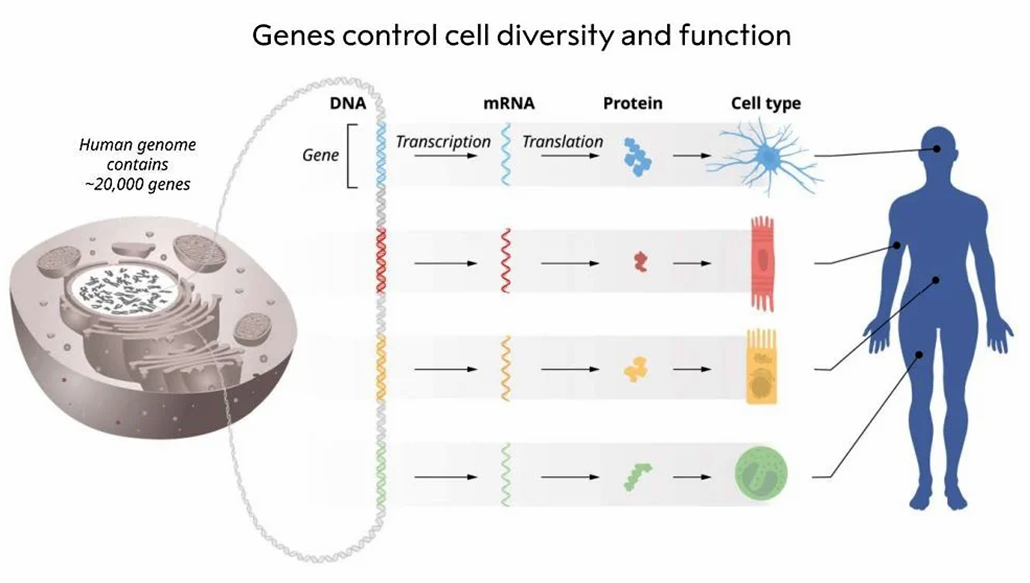The discovery of microRNA wins the 2024 Nobel Prize in physiology
These tiny bits of genetic material play a big role in making sure cells work as they should

The discovery of tiny snippets of genetic material called microRNAs (illustrated) has just earned two scientists a Nobel Prize.
ARTUR PLAWGO/SCIENCE PHOTO LIBRARY/Getty Images
By Tina Hesman Saey and Sophie Hartley
Tiny bits of genetic material known as microRNAs help control how cells throughout the body produce proteins. And that may give these genetic bits an outsized role in health and disease. For the discovery of microRNAs, two scientists will take home this year’s Nobel Prize in physiology or medicine.
Their award was announced October 7 at the Karolinska Institute in Stockholm, Sweden.
Victor Ambros and Gary Ruvkun will split the prize of 11 million Swedish kroner (about $1 million). Ambros works at the University of Massachusetts Chan Medical School. It’s in Worcester. Ruvkun is based at Harvard Medical School in Cambridge, Mass.
When microRNA was discovered, it “introduced a new and unexpected [method] of gene regulation,” said Olle Kämpe. Vice Chair of the Nobel Committee that made this award, Kämpe spoke at the prize’s announcement.
The two new Nobel laureates “are both brilliant scientists and wonderful people,” says H. Robert Horvitz. He’s a biologist at MIT in Cambridge, Mass. He knows Ambros and Ruvkun. At one time, they worked in his lab.

Controlling protein production
Every cell in the body contains the same set of DNA. These molecules hold the instructions that every cell needs to make the proteins that do various jobs throughout the body. Those jobs include making muscles contract. Or helping the gut digest food. Or sending signals via nerves to the brain.
But if every cell has the same DNA, how do different types of cells know to make only the proteins needed for their particular jobs? A process called gene regulation does this. It helps each cell use only the right bits of DNA when it comes time to make proteins.
Here’s how microRNA helps regulate genes.
DNA holds the protein-making instructions in long-term storage. Cells don’t convert those DNA data directly into proteins. That genetic material is too valuable and much too big. Instead, cells copy data from DNA into molecules called messenger RNA, or mRNA. That copying process is known as transcription.
Mini machines in each cell read the mRNA instructions to build proteins. That process is called translation. (This is because the cell reads instructions in one chemical language, RNA, and then converts it to a different one, proteins.)
It’s the step between copying DNA and translating mRNA where microRNAs work.
These tiny, micro snippets of RNA latch onto much longer mRNAs. Any mRNA that has microRNAs clinging to it will break down. That prevents its instructions from being made into a protein. This process is important because cells need to make just the right proteins at the correct time. MicroRNAs help make sure the process goes smoothly.
MicroRNAs “are not on-off switches,” adds Tamas Dalmay. Instead, they work like a dimmer switch to dampen production of proteins. Dalmay is a molecular biologist at the University of East Anglia in Norwich, England.
Do you have a science question? We can help!
Submit your question here, and we might answer it an upcoming issue of Science News Explores
MicroRNA’s humble origins
The discovery of microRNA goes back to a tiny worm that refused to grow up.
Ambros and Ruvkun were working in Horvitz’s lab on this see-through worm, called C. elegans. The pair worked to discover key steps in the worm’s development controlled by two bits of DNA, or genes. One gene was called lin-4. The other was lin-14.
Worms with a mutant form of lin-4 repeated certain steps in the larval stage of its growth. The result: Their bodies never made some adult parts.
Ambros narrowed the location of lin-4 in the worm’s DNA. But he found no protein-making gene there. Instead, he saw little bits of RNA showing up. At first, he brushed them off as some sort of grime. “It turned out that was the microRNA that we’re all talking about,” Ambros said at a news conference on October 7. Yet it was “so unexpected that we had kind of ignored it for a while as just, you know, schmutz.”
In 1993, Ambros discovered that lin-4 makes a microRNA. Ruvkun found that the lin-4 microRNA latches onto part of the lin-14 mRNA. That linkage turns down production of lin-14 protein. The lin-14 protein, in turn, regulates other genes needed for the worm to mature.
This way of controlling protein-making was unexpected and entirely new. “It wasn’t really taken super seriously because it was in this little worm,” recalls Luisa Cochella. “People thought this was something that these funny worms do.” Cochella is a molecular biologist at the Johns Hopkins School of Medicine. That’s in Baltimore, Md.
Seven years later, Ruvkun went on to find that many animals have a microRNA called let-7. That includes humans. “That’s when people noticed,” Cochella says. It “started a frenzy to find all the microRNAs that are present in animals.”

This diagram shows how cells turn the information from DNA into proteins. Each cell contains the same DNA, including about 20,000 genes (in humans). Cells copy, or “transcribe,” information from those genes into mRNA molecules. Cells then use the information from those mRNA molecules to make proteins, a process known as translation. Cells of different types make different proteins. MicroRNAs help control when and where cells make those proteins. Click image to enlarge.
A little worm’s big legacy
More than 1,000 microRNAs are now known to regulate genes in people. Other animals and plants also use them. Some microRNAs evolved a long time ago. Those old types tend to control basic life processes common to all plant and animal cells. Newer microRNAs tend to regulate processes found only in certain species.
When gene regulation errs, it can lead to disease. So microRNAs not only play an important role in the workings of healthy cells. For instance, malfunctioning microRNAs play key roles in cancer, pain, itchiness and eye diseases.
“The critical role that microRNAs play in health and disease has become more and more apparent,” said David Brown. He’s the president of the academic medical centers of Mass General Brigham in Boston. He spoke at a news conference honoring Ruvkun on October 7.
New disease treatments based on microRNAs are now being tested in people. These include treatments for heart disease and cancer.
The discovery of microRNA came “completely out of the blue! And it shows that curiosity research is very important,” Kämpe said. “They were looking at two worms that looked a bit funny and decided to understand why. Then, they discovered an entirely new mechanism for gene regulation. I think that’s beautiful.”







